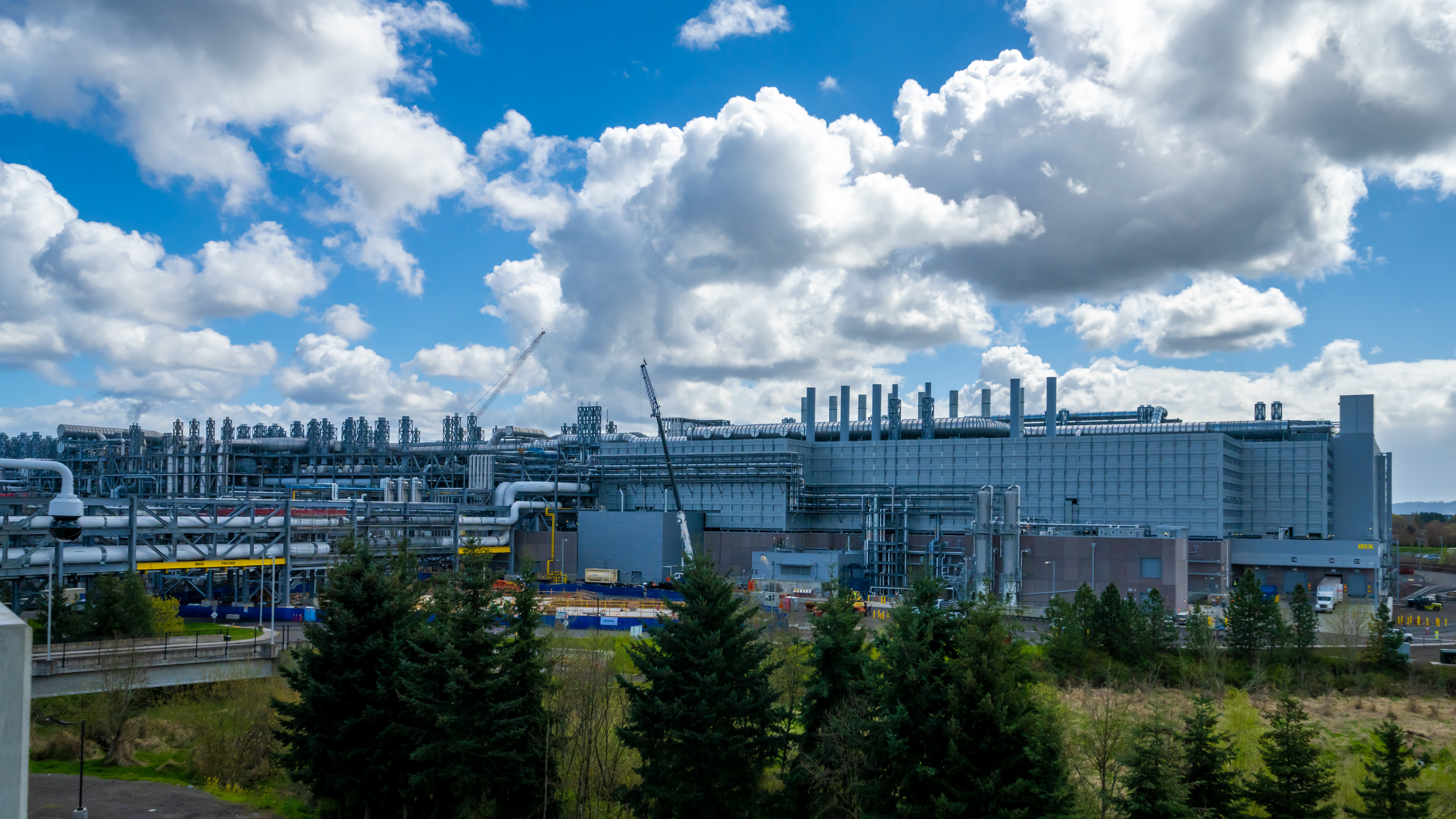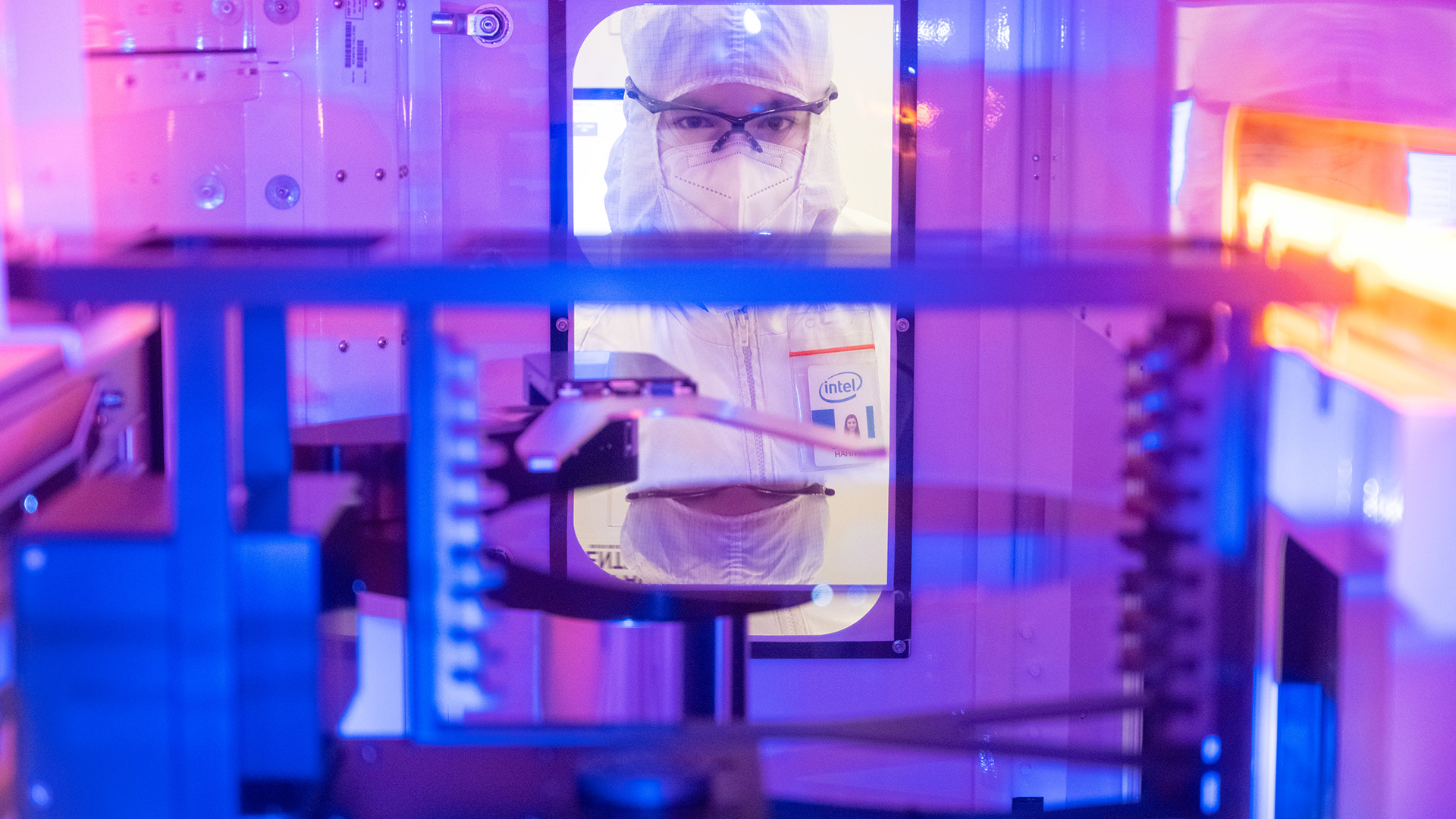Intel pledges to have net-zero greenhouse gas emissions by 2040
The company also aims to improve product efficiency by 10 times for its client and server chips by 2030.

Intel has strengthened its eco-friendly pledge today by announcing further reductions in its direct and indirect greenhouse gas emissions leading up to 2040. By that time, the chipmaker says it'll be entirely free of greenhouse gases from its global operation. It has also set a goal to achieve a five-fold increase in performance per watt for its upcoming "CPU-GPU", Falcon Shores.
Intel CEO Pat Gelsinger takes the lead on the announcement, noting that climate change is an "urgent global threat." Couldn't agree with you more, Pat. He also notes that Intel, as "one of the world's leading semiconductor design and manufacturing companies" is in a "unique position" to make a difference throughout the semiconductor industry.
That's heartening to hear, but actions speak louder than words. So what that actually means for Intel is that it is aiming to reduce its Scope 1 (direct) and Scope 2 (purchased energy, heating, cooling) greenhouse gas emissions to net-zero by 2040. In order to do that, it's set some new interim milestones that must be met by 2030, which is when Intel has pledged itself to further sweeping eco-friendly action as a part of its RISE targets.
These new milestones for 2030 are:
- 100% renewable energy across global operations
- Build new factories and facilities to new US Green Building Council LEED program standards (including Europe and Asia-based investments, such as the company's new German fab)
- Launch a cross-industry R&D initiative to identify greener chemicals which are less damaging to the environment, and develop new abatement equipment used to more effectively remove pollutants
What's not included here are Scope 3 emissions, which includes all the other manufacturing and logistics steps, often carried out by other companies, that go into delivering the final Intel product. On that front, Intel has said it plans to partner with suppliers and customers to take "aggressive action to reduce overall emissions". The only firm promise it's made in this department is to drive supply chain greenhouse gas emissions to at least 30% lower by 2030 than they would have been in absence of investment and action.
Sounds a little woolly, or at the very least tough to quantify, but I'm hopeful that will manifest into some genuine, serious change at the very least.

Though at least there's a very firm goal of increasing performance per watt by five times for Intel's upcoming Falcon Shores product. That's essentially a hybrid chip with both CPU and GPU contained within a Xeon server footprint, so won't be something you should expect to see in a gaming PC anytime soon. At least we may see some improvements of a similar nature on the client gaming CPU side of things, as Intel has said it aims to improve product energy efficiency by 10x for client and server products by 2030.
The biggest gaming news, reviews and hardware deals
Keep up to date with the most important stories and the best deals, as picked by the PC Gamer team.
That couldn't come sooner, as gaming CPUs and GPUs are getting pretty power-hungry with no real signs of slowing down as of yet.
For comparison's sake, AMD has also set 2025/2030 environment goals of its own. These are to reduce Scope 1 and Scope 2 greenhouse gas emissions from its operations by 50% from 2020 to 2030, and increase energy efficiency in its processors and accelerators by 30 times from 2020 to 2025. As for its supply chain, or Scope 3 emissions, AMD says it wants all of its manufacturing suppliers to have public emissions reduction goals by 2025, and 80% to source renewable energy by that time, too.
Ultimately, it is our job as consumers to hold these massive corporations accountable for their waste, emissions, and whether they hit these goals. Just as much as it's our job to help do our part to reduce and recycle e-waste and our own impact on the environment, too.

Jacob earned his first byline writing for his own tech blog. From there, he graduated to professionally breaking things as hardware writer at PCGamesN, and would go on to run the team as hardware editor. He joined PC Gamer's top staff as senior hardware editor before becoming managing editor of the hardware team, and you'll now find him reporting on the latest developments in the technology and gaming industries and testing the newest PC components.

